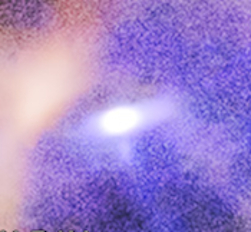 HEAPOW: Getting A Kick Out of a Supernova (2022 Aug 15)
HEAPOW: Getting A Kick Out of a Supernova (2022 Aug 15)
Compact objects called neutron stars are formed in the violent collapse that occurs at the end of the thermonuclear life of stars more massive than about eight times the mass of the Sun. When this collapse happens, the very center of the star, containing about as much matter as our Sun, gets crunched so tightly that the protons and electrons which make up normal matter get squeezed together to form neutrons (which is why these objects are called neutron star in the first place). This collapse is followed almost immediately by an incredibly power supernova explosion. This explosion propels the outer layers of the dead star into its host galaxy, enriching the medium between stars with complex chemicals which can be used to form new stars and planets, and forming a large hot glowing cloud of gas called a supernova remnant. But what happens to the neutron star? The supernova explosion can impart impart an enormous amount of energy to the neutron star, causing it to rocket off in one direction or another. The direction and speed of the neutron star provides important information about the power, the asymmetry, and age of the stellar explosion. The image above shows the glowing clouds of gas that makes up the supernova remnant called G292.0+1.8 (or G292 for short) produced by the supernova of a star about 13 to 30 times the mass of the Sun which exploded a few thousand years ago. The image is a composite optical image and X-ray image from the Chandra X-ray Observatory. The inset shows a close-up of the X-ray image centered on the remnant's fast rotating neutron star (the bright white point in the inset). This neutron star is at some distance from the center of the optical remnant, suggesting that the neutron star got a big kick out of the stellar explosion. Thanks to the combination of Chandra's excellent ability to take very sharp X-ray images, and its long operational life (more than 20 years and counting), scientists have been able to directly measure the velocity of the neutron star by comparing Chandra images from 2006 and 2016. They find that the neutron star is moving at more than 600 km/s (more than a million miles per hour). Not only does this measurement provide important information on how the kick to the neutron star was delivered, but they also suggest that the remnant is younger than previously believed.
CXC: G292.0+1.8: Chandra Catches Pulsar in X-ray Speed Trap
viewtopic.php?t=42444
| << Previous HEAPOW | High Energy Astrophysics Picture of the Week | Next HEAPOW >> |